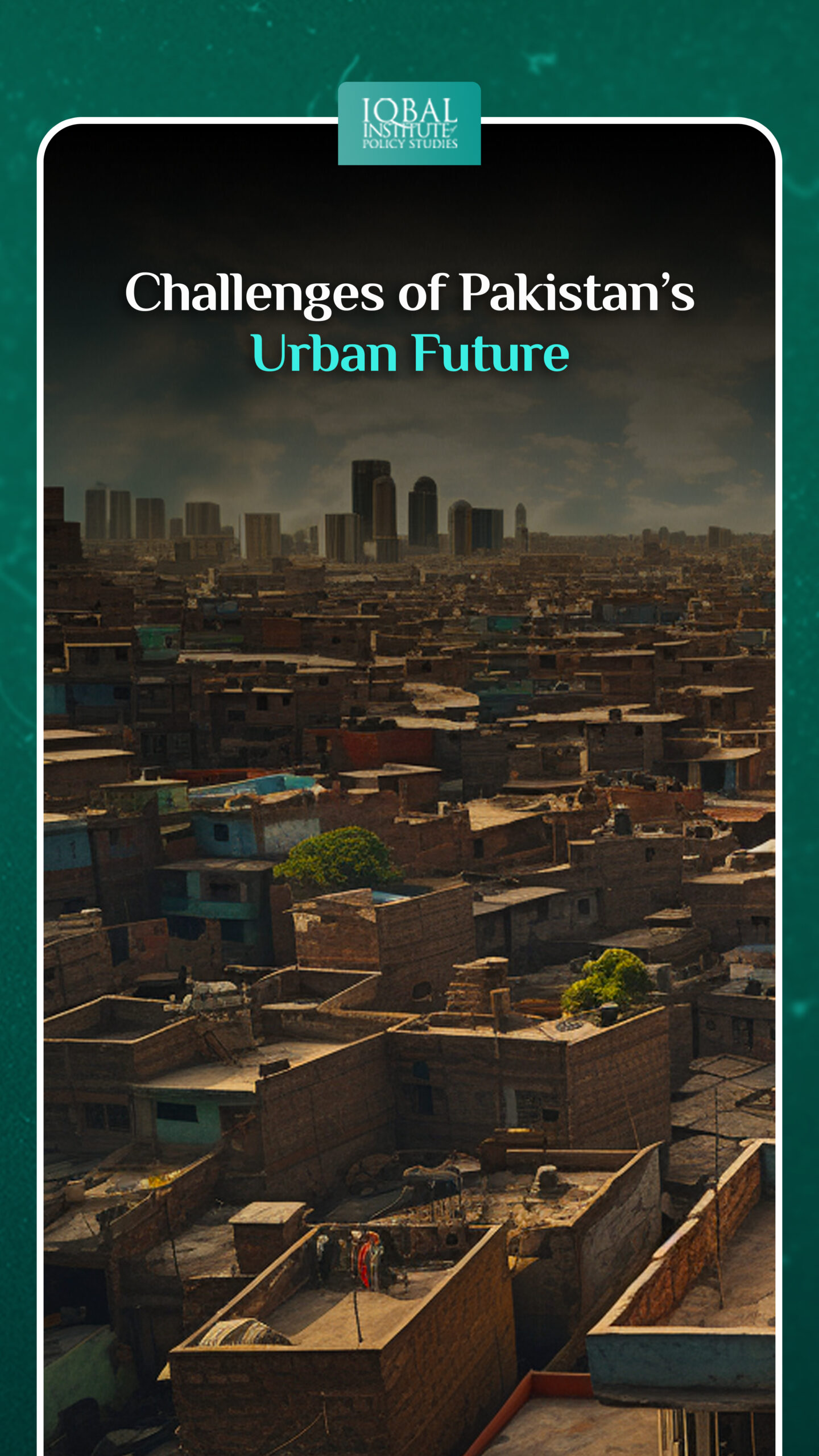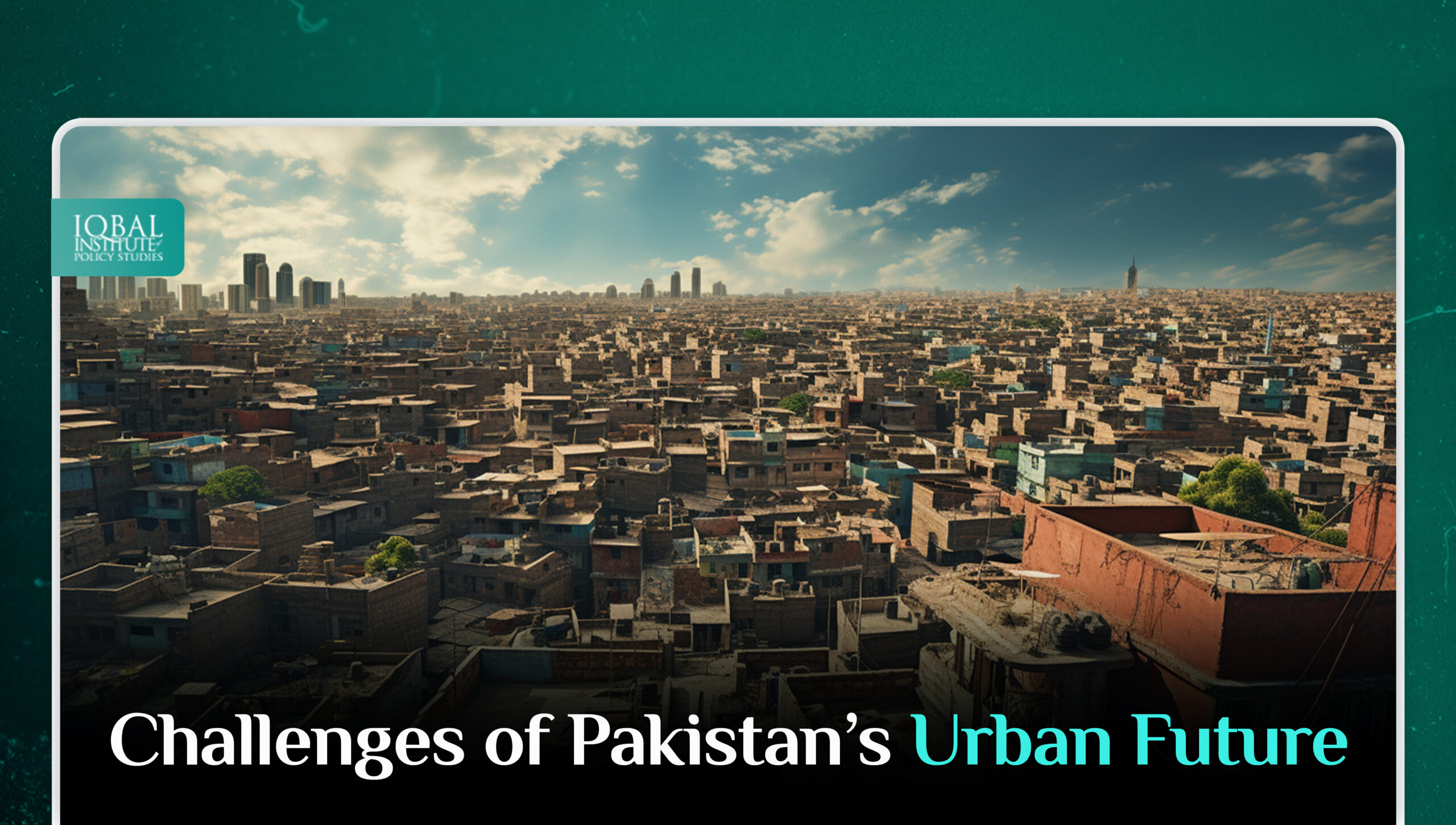The future of a country is in its progressive cities. A sustainable and prosperous urban future belongs to the cities which are making they are present as a primary focus of evolution. The urban future may offer a hybrid and multifunctional life with an eco-sustainable environment and a digital green economy. These cities will be dominated by the latest technologies and awe-inspiring skyscrapers. People from other countries would give anything to be a part of these futuristic cities as they would stand out from the rest of the world. However, at present, millions of people are moving to cities rapidly around the world, leading to a giant wave of urbanization. As the urban population is on the rise, future cities will face a lot of challenges linked with accommodation, sustainability, and demographic and lifestyle changes. Pakistan has the highest rate of urbanization in South Asia. Ample social and economic opportunities in cities have led to mass migration from rural to urban areas. As a result, urban cities are crowded, forcing an uncontrolled urban expansion. City management has to deal with the housing crisis, urban poverty, and unemployment. The government is also struggling to provide better jobs and services to the inflated population. Moreover, these cities are expanded without making any developments or contributions to the economy of Pakistan. The urban future of Pakistan is a challenging one because the country is already struggling to deal with current urban issues. Therefore, it needs to formulate intelligent urban strategies to overcome future problems. Only a better present can help achieve a stable and progressive urban future.
Scenario in Pakistan
Urbanization has been a unique trend of the past in Pakistan. People used to live in small communities. However, there has been a dramatic shift in that as people are moving from rural to urban areas in large numbers. Pakistan has a growing urbanization rate with 37.44% of its population residing in big cities (Trading Economics, 2021). One-third of the population is urban and the number is expected to rise to 50% by the end of 2025 (Kugelman, 2013). Moreover, 40% of Pakistan’s urban population is living in slums in and around the cities due to insufficient resources to afford accommodation (Anwar, Hasan, & Saqib, 2021). As a result congestion, pollution, housing shortage, mobility, and other utility issues are on the rise. Cities are running out of open public spaces, offices, commercial spaces, and feasible urban transport systems.
Although Pakistan has some of the largest cities in the world yet they are not inclusive. People living in slums and ghettos constantly face threats of eviction. The urban planning of our country could not keep up with the changing dynamics brought by high-speed urbanization. The cities lack the strength and dynamism of progressive and productive modern cities. Moreover, the economic growth of Pakistan is not as rapid as the growth of population and urbanization. Therefore, the government is unable to meet the accelerating urban and environmental demands and services. In addition to that, the ongoing climate crisis in the country has displaced millions of people with one-third of the country under water (Sands, 2022). As a result, the majority of these people are making their way to already struggling big cities to find shelter. These, and many other issues pose a great threat to the urban future of Pakistan. If not acted upon with proper strategy and planning, it could change Pakistan’s status from a developing to an underdeveloped country.
Challenges for the Urban Future
Shortage of Housing Units and their Affordability
Pakistan is currently facing a housing shortage of 10 million units (Durre-e-Nayab, 2022). If current practices are continued then big cities of Pakistan will face a 78% of housing shortage by 2035 (Sheikh & Nabi, 2017). Moreover, inflation has caused a surge in the cost prices of rents and houses. People with low incomes cannot afford to find standard accommodation in big cities. As a result, these people reside in slums and ghettos that are formed on open spaces or valuable commercial or residential land. These areas are rapidly increasing and expanding inside and on the outskirts of big cities. The cities are segregated into poor and rich areas as a consequence, giving rise to health issues, crimes, and poverty.
Water Scarcity
Pakistan has a struggling economy where a majority of its population is dependent on the agriculture sector and natural resources. Drastic changes in the climate of the country have not only increased the atmospheric temperature but also reduced the water flow in the Indus River, which is the only main source of water for Pakistan. As a result, water demands for agriculture and human use have increased. The huge population dependent on ground and surface water sources is now facing water shortage issues. The country is changed from a water-stressed to a water-scarce country.
Poor Sanitation
Pakistan is one of the top countries with poor access to clean water. Due to the lack of toilets, the use of dirty water, and poor hygiene, 289,000 children under the age of five die each year (Kunbhar, 2018). The expansion of cities and industries is depleting natural water resources. As a result, clean water is only accessible to the wealthy community in the country. Moreover, a lack of education and proper sanitation system in high-density areas results in poor hygiene practices. Open defecation and the use of contaminated water increase health issues and death rates.
Transportation
The majority of the cities in Pakistan other than Karachi are without a mass transport system. Moreover, the rising inflation has caused a spike in the prices of the private transportation system. People who cannot afford the commute are forced to live in slums and unplanned areas within the city’s neighbourhoods. The insufficient transport system has increased the number of private automobiles on the road leading to severe traffic jams and air pollution. On the other hand, the government expands the already existing urban roads to curb the issue but by the time they are developed, the number of vehicles on the road has also increased. Moreover, cities lack special lanes and pavements for walking, bicycles, or ambulances which further aggravates the congestion on roads.
Lack of Health care and Education Quality
Better health and education facilities in cities are one of the reasons for rapid migration from rural to urban areas. Cities are turning into concrete jungles, rising the atmospheric temperature. The poor quality of air and increasing pollution leads to rising health issues. Government hospitals lack the standard facilities and technology to treat various diseases. Moreover, private hospitals are inaccessible to the low-income group due to the expense. In addition to that, the majority of people prefer private schools, indicating the poor quality and standard of education in government schools. The absence of good health care and better education facilities pushes people towards big cities, where service delivery becomes extremely drained due as the urban population grows.
Land Management
Pakistan follows an outdated land regulation and urban planning policy that has resulted in below-par urban land management. Only 0.5 % of land in Pakistan is planned and digitally mapped (Ejaz, 2022). The rest of the land is used insufficiently in the form of illegal housing schemes, horizontal developments, and unplanned settlements. These developments are built beyond the city’s limits encroaching agricultural lands, forests, swaps, and green belts. There is no regulatory authority to keep a check and balance such illegal practices. Moreover, there is a lack of political and social involvement in urban planning policies. As a result service delivery is further strained.
The Way Forward
The government needs to create appropriate and effective urban policies with creativity and judiciousness. Instead of expanding the existing cities, it needs to develop new towns and cities with the latest technologies and eco-sustainability features.
The government should make and implement laws that promote the use of green practices in future developments in the country. It will not only lessen the pace of climate change but also minimize the issues of water scarcity and energy crisis.
A resilient and effective regulatory authority is a crucial need to keep a check and balance on illegal developments in the country. Furthermore, the focus should be on vertical development instead of horizontal development to overcome the ongoing housing crisis in the country.
The introduction of massive and easy transport systems in all cities will lessen the number of private vehicles on the road. It will reduce congestion, and air and noise pollution leading to an ease in service delivery.
Conclusion
Cities are a hub of future innovation and economic growth. However, our cities are choked due to poor urban planning and land management. The cities are expanding exponentially without considering the changing demands, needs, and challenges of the massive population. Therefore, the government needs to take immediate action by finding creative solutions to repurpose urban spaces for maximum efficiency. Overcoming the existing challenges is the only way to secure and create a prosperous, progressive, and modern urban future. It will not only lead to a sustainable and growing economy but provide impulses for modernization in society as a whole.
This article is written by Haneen Gul. Haneen is a Research Analyst at the Iqbal Institute of Policy Studies (IIPS).
References
Anwar, A., Hasan, L., & Saqib, A. (2021). PIDE. Retrieved from pide.org.pk: https://pide.org.pk/research/cities-of-the-future/#Content-e323acc63196e6a8e38e
Durre-e-Nayab. (2022). PIDE. Retrieved from pide.org.pk: https://pide.org.pk/research/the-assumed-shortage-of-housing-in-pakistan/
Ejaz, U. (2022, March 14). Pakistan and Gulf Economist. Retrieved from pakistangulfeconomist: https://www.pakistangulfeconomist.com/2022/03/14/economics-of-real-estate-in-pakistan/
Kugelman, M. (2013, January). Urbanization in Pakistan: causes and consequences. NOREF Expert Analysis. Retrieved from https://www.files.ethz.ch/isn/159296/4c5b5fa0ebc5684da2b9f244090593bc.pdf
Kunbhar, Z. (2018, March 22). Daily Times. Retrieved from dailytimes.com.pk: https://dailytimes.com.pk/218000/21-million-people-in-pakistan-dont-have-access-to-clean-water-report/
Sands, L. (2022, August 30). BBC NEWS. Retrieved from bbc.com: https://www.bbc.com/news/world-europe-62712301
Sheikh, H., & Nabi, E. (2017, February). LSE. Retrieved from blogs.LSC.ac.UK: https://blogs.lse.ac.uk/southasia/2017/02/15/the-six-biggest-challenges-facing-pakistans-urban-future/
Trading Economics. (2021). Retrieved from tradingeconomics.com: https://tradingeconomics.com/pakistan/urban-population-percent-of-total-wb-data.html



Leave a Reply